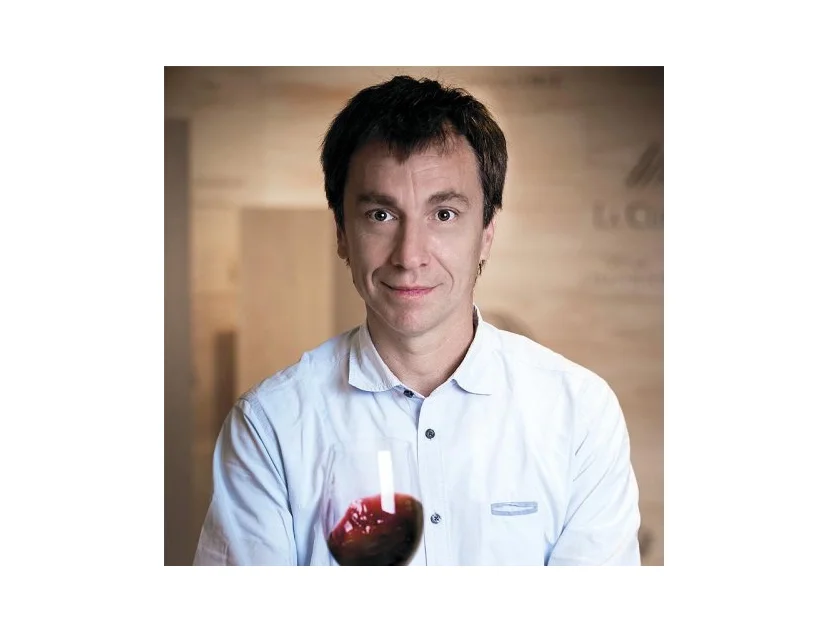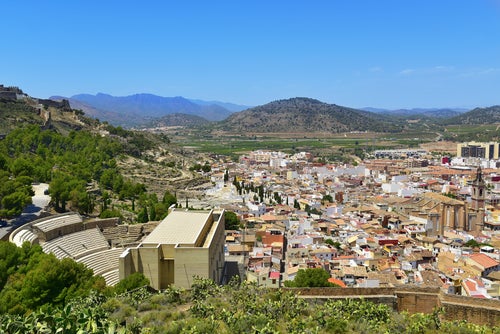
In the latest of our series of series of extended interviews with leading wine growers marking 20 years of The World of Fine Wine, Francisco Baettig, of Baettig Wines in Traiguén, Malleco, Chile, takes stock of the rapid evolution of Chilean fine wine.
Vignerons’ stories: Katharina Prüm
Vignerons’ stories: Eben Sadie
Vignerons’ stories: Jean-Baptiste Lécaillon
Vignerons’ stories: Véronique Sanders
Vignerons’ stories: Telmo Rodriguez
Vignerons’ stories: Diana Snowden Seysses
Vignerons’ stories: Brian Croser
Learning what you can—and can’t—fix
Francisco Baettig: When I think of the history of the classic iconic wines in Chile, wines such as Almaviva, the wines that started in the mid-1990s, the style was set by the market, especially the American market. That meant the style was more about opulence and ripeness, and we became a little bit obsessed with ripeness. We were listening a little too much to foreign consultants, and trying to please some markets, rather than making something true to Chile. And at some point around that time, we started looking a little bit less at the vineyard—the terroir. We thought more about how things could be accomplished in the winery with new oak.
We went too far. But that started to change and, little by little, we started to realize the importance of the vineyard—that you cannot make a good wine just by technology and winery stuff. I have a theory about this, and I’m sure it’s not that far from reality. Chile started to export at the beginning of the 1990s. Before that, the wines were all simple and picked early—not bad, but simple. We were in a good position for producing grapes; conditions were safe for production; the quality of the wines was good for the price; and they were very well received in the market. This agricultural business could be done, and growers treated vines like planting kiwis or apples. Nobody, or very few people, had made the connection at the time with terroir and the conditions of the soil for each variety.
Also, because we didn’t have phylloxera, the cost of planting was very low in Chile. We could take the pruning material and put it directly in the soil, so that it would cost 15 cents rather than $1. Creating a vineyard was cheap, but the plant material wasn’t good, you had viruses, low production, no use of rootstocks to adapt to the soil conditions, no clonal material… all those tools were not used because we didn’t have phylloxera. The plant material wasn’t good, we planted the wrong things in the wrong climate.
Today, most people in a new vineyard in Chile would prepare the soil properly, with good plant material, no viruses… The reality is that you now start with very good plant material, we know what’s needed. It’s been a complete change over the past 20 years.
But it wasn’t that way back then. So, we did an impressive thing in terms of the way the wine industry developed—it grew, and wine became a big industry for Chile. But, for the reasons I’ve said, that was more at the entry level. And once you position yourself there, it’s very difficult to change. Chile became this safe, good-value-for-money place, a lot of people planted everything, everywhere… but it’s not a good idea to plant Carmenère in a cool area, or Pinot Noir in a warm area. We thought it was possible to fix things in the winery and in the vineyard with a little bit of suffering. But these varieties have particular needs: the temperature, the soil…
At the same time, the reality of wine production in Chile has changed. The cost of labor is no longer low, other costs are rising, too, and producing cheap wines is not as easy as it was. A lot of vineyards were planted with the idea of producing cheap wines, but that is not the reality anymore.
The problem for me in Chile is that it has the highest proportion of its production in exports, something like 75%. That’s something to be proud of, but it is very challenging, to have to export, because we are in the south of South America, and we have a very small local market, and, if you look at the average price of exports of Chilean wine, it’s been almost the same—$28–30 for 12-bottle, 9 liter-cases—for the past 15 to 20 years. It’s cheap, and it hasn’t changed. It’s a challenge for the Chilean wine industry to work out how we reposition Chile overall. We understand the importance of vineyards now, and the way you manage them for quality. But we have to fix some other problems first, to solve the mistakes we made. So, today Chile is in this moment of transition.
Fire and water
Francisco Baettig: Climate change wasn’t a big issue 20 years ago—except for 2003, when it was very hot everywhere, even in France. Today, it is a reality: 2017, 2020, 2023 were all very hot in Chile. Fires are something we didn’t have before 2017—it’s a problem that Australia and California have had much longer, but it’s something we have to cope with now, too. We have to be careful in terms of how we manage the vineyards, because fires can happen, they’re a reality.
In general in Chile, the challenge has never been about ripening the fruit: You have between and 60 and 90 days of sun, no cloud. It’s not Bordeaux (although Bordeaux has changed, too), it’s a question of how to protect the fruit, how to preserve the acidity. In the past, we were obsessed with any hint of greenness. We would expose the fruit with leaf-plucking, stress the vines, with very little irrigation. That was a big mistake.
We have conditions that are sometimes demanding, but we irrigate a bit more, we avoid putting the plant through excess stress and suffering—the whole management in the vineyard has changed. In my case, I like fresher wines, more acidity, more ageability. So, I pick a little earlier. That is a style thing, but today we know that when we overstress the plant, the vigor of the plant will go down, it will be more susceptible to wood fungus (which is more and more common everywhere), and to nematodes which attack the roots. And so we have a deeper understanding of vineyards overall, the importance of the climate, and vineyard management in a time of climate change.
Even in hot years, you will see that, in the high-end wines, they still have very good color, moderate alcohol around 13.5%, and they have acidity, because we are managing the vineyard to cope with those conditions. And the vineyard is in better condition, it’s less stressed, with fewer diseases. That happened over the past 10 to 15 years, but it took some time to get there.
The other big change in general in Chile, which has happened quite recently, is that, before, we hadn’t internalized the importance of maintenance of the vineyard. I mean year by year, not just waiting 20 years until the vineyard is in very bad shape, but replanting 1% or 2% of the vineyard every year. The French have done that forever, as one of the tools they consider essential—they know you have to maintain the vineyard every year.
Today in Chile, we consider more variables, and what you do changes depending on where you plant. In Central Chile, you need to irrigate—that’s part of climate change. Imagine: 70mm [less than 3 inches] for the whole year. That’s what happened in Maipo in 2019. But in some other areas of Chile, moving south, you get 1,000mm [nearly 40 inches] of rain, so the conditions are totally different. In the south, we planted to dry-farm, at lower vine density, so the plant has more soil, less competition. When you have high density, you need a lot of water—so, if you don’t have that much water, you shouldn’t plant at high density, you should go a bit lower.
Chile has a diversity that I love. Some areas are more traditional, such as Maule and Itata, with País and later Cinsault vines, now 100-years-old—beautiful, unbelievable things. They are part of the community, but the wines have had very low prices. Even so, there’s amazing potential there. The idea is to rescue that, to make a very good, nice Grenache, or even whites—but then the challenge is how to sell that. Chile is more based on Cabernet and Carmenère, maybe Sauvignon Blanc. But when you grow 80- or 100-year-old vines, the yield is next to nothing. You can’t charge cheap prices, because you can’t make a business out of it. But once you put the prices a little higher—especially for the lesser-known varieties—it’s very challenging to sell the wines, even if they are beautiful.
Pyramids and bush vines
Francisco Baettig: Generally speaking, wineries in Chile are like a pyramid. Almost all wineries have a big base of volume wine, a middle, and then a little pinnacle of iconic wine. Almaviva is a standalone winery, and Seña is a standalone, but that is very rare. And the question is: How do you sell your pyramid? Is your importer someone who sells quality or volume? The wineries want “both”… but the importer says, “I can’t sell both.” So, we are trapped, and we have been for a long time.
It’s difficult for general managers to see this problem, this structural problem. All countries sell volume wine, but some wineries will be dedicated to that—they focus on volume… or they are like Lafite and they sell only three wines in the top tier. It’s impossible to do both.
This has an effect on viticulture. The tendency is to go to the average, naturally. Even if you have an icon wine, you don’t have a dedicated team for it. Most of the wineries produce every level of wine, but you can’t have the same viticulture team. These are completely different philosophies. With volume, you have to think in kilos, you have to be efficient; it’s totally different with high-end, iconic wines.
Again, it all depends on the business you want to develop. The bush vines in Maule were planted as they are because there wasn’t much water. They have to survive by dry-farming, and so they need more space and soil.
At Baettig, we have a clear philosophy of what we want to produce—which is old-vine concentration, good acidity, dry-farmed, from own vineyards. And we go and look for them. You can still find beautiful old vineyards—they exist. But you have to understand that the production will always be small production—you have to create your image and your business so it works that way.






